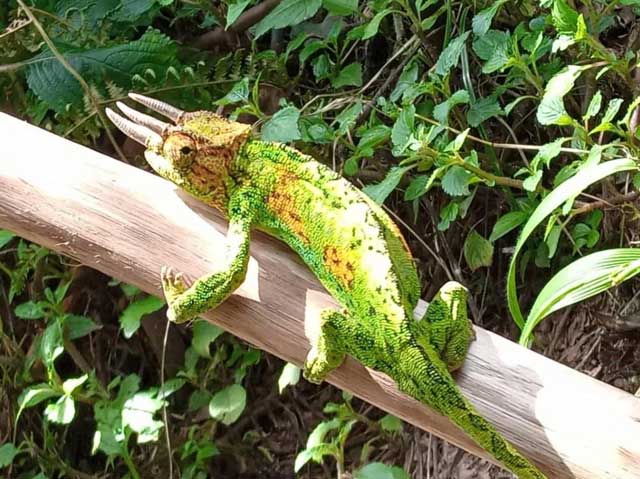
Rwenzori, Uganda | THE INDEPENDENT | Rwenzori National Park has partnered with Word Wide Fund – WWF to protect endangered species, end poaching, and create a buffer zone.
The project, which will be funded by Hempel foundation from Denmark, will be implemented in the districts that surround the park in Rwenzori region starting with Kasese.
The other districts are Kabarole, Bunyangabu, Bundibugyo, and Ntoroko where initial works like surveying and sensitizing the surrounding communities have already kicked off.
James Okware, the Senior Warden in charge of the park, says that due to poaching, climate change, and excessive degradation of the park by those engaged in timber cutting and collection of firewood, several tree species, mammals and reptiles are at the verge of extinction.
He cites some of the endangered species of the reptile category that includes the three-horned chameleons, one-horned chameleons, Rwenzori Side-stripped chameleons and Green Viper snakes.
The others are Mahogany trees, chimpanzees that are being hunted for meat and traditional medicines, and birds that include the Rwenzori Double-colored sunbird, Blue-headed Sunbird and Purple-breasted sunbird.
According to Okware, these challenges have been exacerbated by lack of a buffer zone which has led to degradation of natural resources in the park by surrounding communities for farming and related activities thereby placing immense pressure on its landscape.
In 2015, WWF conducted research which shows that in Kasese district alone, the forested area declined from 108,758.12 hectares in 1990 to 77,214.58 hectares in 2005, and the decline is projected to have escalated since.
“Subsistence agriculture with limited use of modern technologies is the main household activity for the rural populations. Increasing population pressure combined with poor yields has meant that in many areas agricultural land has expanded up to the park’s boundary and has extended to the use of slopes that are prone to erosion,” Okware says.
The other challenge is insufficient funds to effectively manage the park which has seen its management fail to recruit half of the required staff due to a financing gap of up to 2 billion shillings annually.
Okware adds that this has now been worsened by the Covid-19 pandemic which has led to an acute fall in the revenue they used to collect from tourist of 1 billion shillings annually to almost nothing.
”Limited funding has meant that over the past decade the park has not been able to invest sufficiently in ecological monitoring. Consequently, there is little data available on the status of its flora and fauna. This means that it is difficult for us to make informed conservation management decisions,” Okware says.
According to the Project Manager, Daniel Ndizihiwe, they will fund alternative economic activities for the surrounding communities like beekeeping and empowering the park’s management to embark on strict surveillance.
This, he envisages, will be possible with the support of the communities surrounding the park to sustain biodiversity and the functioning of ecosystems for the benefit of biodiversity and their own.
Rwenzori National Park has Africa’s third highest mountain peak. It is also a UNESCO World Heritage Site.
 The Independent Uganda: You get the Truth we Pay the Price
The Independent Uganda: You get the Truth we Pay the Price


